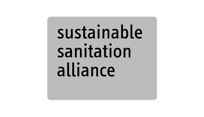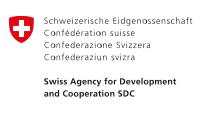Transfer stations are key facilities in waste management that enable the efficient transfer of waste from smaller to larger vehicles, optimising transport logistics. They ensure the systematic and safe movement of waste while addressing different transport needs and accessibility variations within an SWM system.

Different vehicle types are used for the collection and transport of waste depending on access and transport distances: smaller vehicles (C.1 - C.3) for collection from storage facilities (section S ) and large motorised transport vehicles C.4 for bulk transport to treatment or disposal facilities. Transfer stations facilitate the transfer from one vehicle type to another. They must carry out this transfer as quickly and efficiently as possible to ensure the maximum productivity of all vehicle types. Transfer stations can combine transfer and waste sorting P.2, during which valuable materials are recovered and prepared for efficient further transport and processing. When sorting and transfer are combined, further soiling of recyclables can be prevented and the recovered valuables are closer to potential buyers. The disadvantage is that it can require more space, complicate operations and lead to dirtier facilities.
Design Considerations
Different transfer approaches may be appropriate in humanitarian settings. Bulk transport can wait for smaller collection vehicles (a “vehicle rendezvous”) or temporarily deposit the waste on the ground, in containers or trailers. Temporary deposits on the ground are not recommended. The transfer of waste should prioritise gravity-based movement, for instance by using ramps, elevated platforms or reception areas below ground level. Movement by crane should be avoided due to potentially high waste loss. Manual movement should also be avoided as it is physically demanding and puts operators in close contact with waste. Transfer stations must be designed to maximise the productivity of vehicles; long waiting periods should be avoided. The retention time of waste should be low to prevent odour nuisance. Drainage systems should facilitate cleaning but solid pieces of waste should be prevented from entering the drains and be managed on the premises. More sophisticated transfer systems, such as stackable and retractable containers are not realistic for humanitarian settings due to their cost and complexity. Transfer stations should be positioned away from populated areas to mitigate disturbances.
Materials
Ideally, transfer stations are paved to facilitate cleaning and the collection of scattered waste. The road surface must withstand the weight of the vehicles. Cleaning materials and Personal Protective Equipment (PPE) need to be provided for staff X.4. Ramps, elevated platforms or below-ground reception areas should be paved and built with a gentle slope to allow the safe movement of heavy vehicles.
Applicability
Transfer stations and the use of different vehicle types are particularly useful if waste processing and disposal are located far from a settlement. They are less feasible in immediate emergency contexts due to the complexity of setting them up. The simultaneous need to set up the station and select different vehicle sizes and types to deliver to and from the transfer station might be too complex and the inefficient use of one vehicle type may be temporarily acceptable.
Operation and Maintenance
Efficient transfer station operation requires well-coordinated planning to harmonise vehicle capacities and routes, reduce delays and optimise usage. Planning should anticipate potential traffic jams and assess the travelling distances required. Regular, if not daily, cleaning of the transfer station prevents odour nuisance and ensures that scattered waste is not lost for further processing. Transferred waste amounts and vehicle movements should be recorded. If poorly managed, transfer stations can quickly become waste dumps. Access to transfer stations should be limited to staff to ensure safety during vehicle manoeuvrings.
Health and Safety
Faulty waste transfers must be prevented and scattered waste regularly collected to minimise the release of waste into the surrounding environment. The regular hosing down of temporary storage areas prevents odour nuisance and the attraction of flies. Vehicle reversing must be prevented or minimised. The operators’ exposure to waste must be minimised. PPE, including reflective vests, and occupational health and safety training must be provided to personnel X.4.
Costs
If not in public ownership, the use of land for a transfer station can be costly. Building costs, such as for ramps, elevated platforms or below-ground receptions must also be assessed. Using cranes, wheeled loaders or storage and tipping mechanisms significantly increases costs. Operational costs mainly involve staffing.
Social Considerations
Whenever possible, transfer stations should be built at a distance from commercial or residential buildings to reduce odour nuisance and noise. The public acceptability of loading and unloading waste outside regular working hours and working days should be checked. Animals and the public must not have access to transfer stations to prevent accidents, waste picking and scattering of waste.
Key Decision Criteria
Input Products
Organic Waste
Organic Garden/Wood Waste
Organic Food/Kitchen Waste
Recyclables
Plastics
Paper and Cardboard
Metals
Glass
Textile
Mixed Waste
Residual Waste
Output Products
Organic Waste
Organic Garden/Wood Waste
Organic Food/Kitchen Waste
Recyclables
Plastics
Paper and Cardboard
Metals
Glass
Textile
Mixed Waste
Residual Waste
Response Phase
Application Level
Management Level
Space Required
medium
Technical Complexity
medium
Objectives & Key Features
Safe and clean transfer from collection to bulk transport vehicles
Strength & Weakness
- Enables the use of different vehicles adjusted to access and transport distances
- Can enhance operational productivity in waste management systems
- Can lead to the leakage of waste into the neighbouring environment
- Can increase traffic around transfer stations
- Can lead to odour nuisance within settlements






